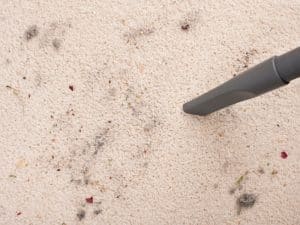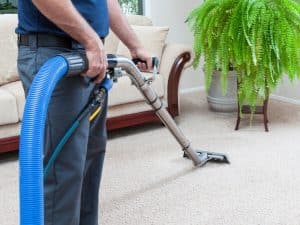Understanding how cleaning carpet stairs can curb allergens matters for any NDIS home. With carpets collecting dust, pet dander and pollen, you risk persistent allergen buildup that worsens over time. Staircases often escape thorough cleaning, allowing particles to settle deep into fibres. Despite regular vacuuming, these surfaces remain contaminated, posing a health risk in NDIS environments. Yet, with targeted methods, you can achieve improved indoor air quality, ease respiratory concerns, and protect well-being. This article explores common challenges with stair carpets, explains why simple vacuuming falls short, and details expert remedies that conform to NDIS guidelines.
What challenges do NDIS participants face when cleaning carpet stairs?
Cleaning stairs can stretch physical capabilities and test even the most determined carers. Here are the key hurdles:
- Balance issues: Manoeuvring a vacuum or brush on each step demands steady footing, intensifying a significant drawback for those prone to falls.
- Fatigue factor: Repeated bending or kneeling on stairs increases pain, causing sessions to end prematurely and creating a notable disadvantage in thoroughness.
- Tool mismatch: Standard vacuums lack attachments sized for stair depths, so nozzle heads skip edges where fibres trap dust, leading to a major downside over flat-surface cleaning.
- Time constraints: Allocating extra minutes per step can feel overwhelming compared to quick hallway passes, reducing overall cleaning consistency and opposing the valuable benefit of healthier air.
Recognising these barriers helps you choose adaptive handles, step stools, and targeted techniques to make stair cleaning both accessible and effective.
Why do allergens persist despite regular vacuuming of stair carpets?
Vacuuming often feels like the obvious answer, yet the importance of carpet cleaning for NDIS homes goes well beyond suction alone. Here are the main culprits:
- Pile depth traps: Carpet strands form a dense matrix that low-powered machines cannot penetrate, resulting in a persistent challenge of embedded dust mites.
- Dry stirring: Vacuum heads agitate fibres without removing fine particles, causing allergens to resettle and highlighting the valuable benefit of specialised extraction.
- Filter leakage: Inadequate filtration sends microscopic irritants back into circulation, spreading spores and triggering respiratory issues.
- Irregular cycles: Cleaning only when visible dirt appears lets small debris accumulate over weeks, embedding itself beyond reach and reinforcing the major downside of relying on sight alone.
- Edge oversight: Corners and sparsely touched zones remain untouched by rotating brushes, so particles accumulate where suction is weakest.
These factors explain why mere suction often fails. Addressing these root issues requires tools and methods designed specifically to provide a comprehensive approach to allergen removal.
What health risks stem from insufficiently cleaning carpet stairs?
Lingering dust and moisture create an inviting habitat for irritants that jeopardise health. Here are the potential consequences:

- Respiratory flare-ups: Trapped dust mites and mould spores trigger wheezing, coughing, and asthma symptoms in sensitive individuals.
- Skin aggravation: Contact with allergen-laden fibres leads to itching, rashes, and eczema flare-ups, a notable disadvantage for comfort.
- Sneezing fits: Elevated pollen or dander levels cause persistent sneezing, disrupting daily routines and sleep quality.
- Mould infections: Damp carpets foster mould colonies that may result in long-term lung issues or fungal infections if unchecked, a major downside for overall health.
- Allergy compounding: Repeated exposure worsens sensitisation, meaning reactions intensify with each unmanaged cleaning cycle.
Ignoring these risks allows minor irritations to develop into chronic conditions that demand medical attention. Proactive stair cleaning prevents these health hazards from taking hold.
How can professional carpet cleaning services reduce allergen levels?
When home appliances cannot reach deep layers, experts step in with a powerful solution tailored to sensitive settings like NDIS residences. By addressing carpet cleaning priorities in NDIS homes, professional teams deliver results when DIY methods fall short. Here are the specialised techniques that make a difference:

- HEPA-grade extraction: High-efficiency filters capture particles down to 0.3 microns, removing most dust mites and pollen.
- Hot water flush: The injection of heated water dissolves embedded debris, and then powerful suction extracts contaminants from deep within.
- Rapid-dry systems: Controlled airflow prevents over-wetting, avoiding subsequent mould growth and closing the loop on moisture concerns.
- Eco-safe detergents: Non-toxic solutions break down allergens without harming fibres or provoking chemical sensitivities.
- NDIS-trained technicians: Trained staff ensure every stair tread and riser receives targeted attention, delivering results beyond DIY capabilities.
- NDIS compliance: Accredited providers deliver NDIS-approved carpet cleaning solutions for homes that integrate seamlessly with participant support plans.
Engaging these services not only removes hidden irritants but also extends the life of your carpet, keeping stairs both hygienic and looking their best.
How do moisture control measures support effective cleaning of carpet stairs?
Managing humidity is as crucial as removing debris. Damp conditions lock allergens in place and encourage mould. Here are the essential steps:
- Ventilation check: Open windows or run exhaust fans during and after cleaning to disperse moisture and stale air.
- Dehumidifier use: Maintain indoor humidity between 30–50% to inhibit mite and mould proliferation.
- Leak inspection: Regularly review plumbing or roofing near stairwells to prevent hidden dampness from creeping in.
- Protective underlay: Install waterproof barriers beneath the carpet to block rising damp from subfloors.
- Spot-dry protocols: Apply targeted drying methods—such as clean towels or spot fans—to high-traffic areas immediately after cleaning.
- Routine monitoring: Use inexpensive hygrometers to track humidity spikes and address issues before they worsen.
Pairing these moisture control tips for carpeted homes with expert cleaning guarantees deep extraction and long-lasting freshness.
How often should carpet stairs be cleaned under NDIS guidelines?
Consistent scheduling removes allergens before they root. Here are the recommended intervals:
| Cleaning task | Recommended interval |
| Light vacuuming | Weekly |
| Deep professional cleaning | Every 6 months |
| Spot treatment and moisture check | Monthly |
| Filter and attachment inspection | Quarterly |
Following this framework prevents persistent allergen buildup and avoids the significant drawback of sporadic maintenance. Sticking to these intervals keeps stair carpets looking and feeling clean.
Best practices for maintaining allergen-free stair carpets long-term
Keeping allergen levels low on stair carpets means being consistent, proactive and realistic about the tools you use. Make use of accessible attachments for day-to-day vacuuming, and don’t wait for visible dirt to act—dust mites and allergens settle long before stains appear. Schedule professional cleans at least twice a year to reach deeper fibres and maintain carpet integrity. Use moisture sensors and dehumidifiers to reduce the risk of mould. Most importantly, stay flexible—cleaning strategies should evolve with seasonal triggers and changes in mobility or care needs.
With this in mind, you can also find out how Ahsan Care Provider supports NDIS participants with tailored cleaning plans to help maintain allergen-free stair carpets.


